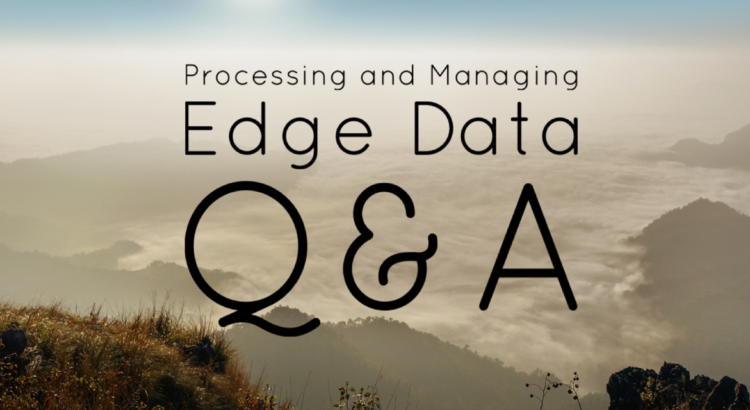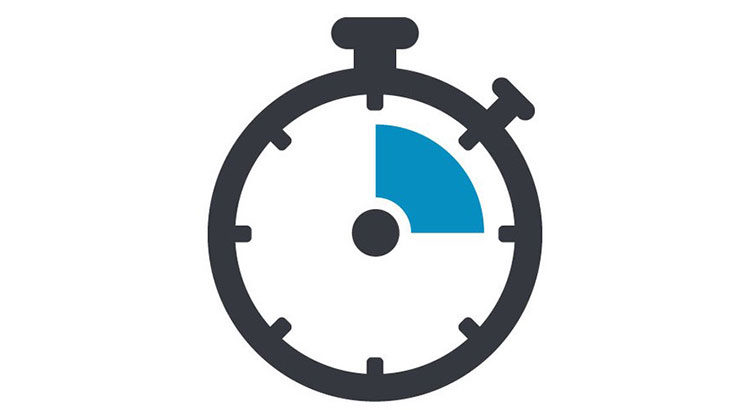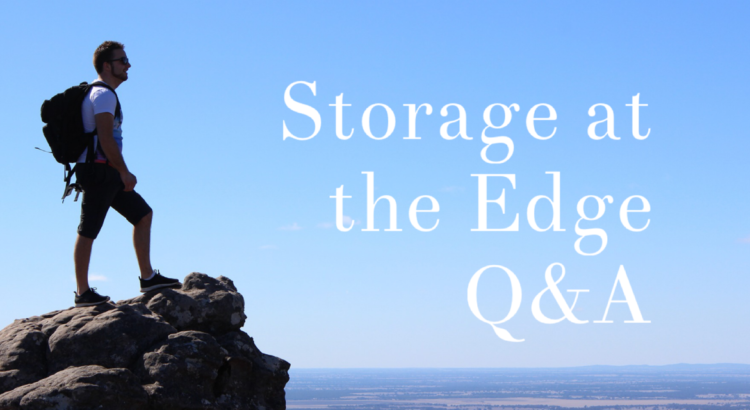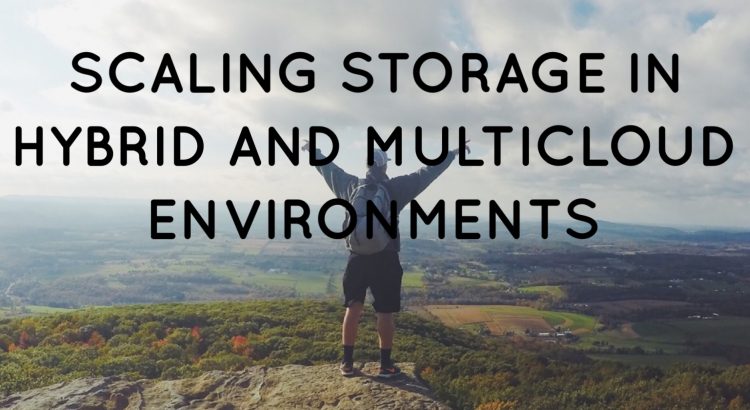
Category: cloud


Join Us for 15 Minutes in the Clouds
- What is Cloud – terminology
- Cloud application architecture
- Cloud data privacy & security
- Cloud provider storage offerings

Storage at the Edge Q&A

Scaling Storage in Hybrid Cloud and Multicloud Environments
- Trends and benefits of hybrid
cloud storage and multicloud deployments
- The range of technologies and capabilities which will help enterprise, hyperscalers and cloud service providers (CSPs) serve their customers
- How scalability differs in block vs. file workloads
- What are key factors to keep in mind when considering a ‘run anything anywhere’ objective?

Disaster Recovery in Times of Crisis – What Role Can the Cloud Play?
While humanity has always hoped to not have to deal with disasters the last few months have shown that we live in uncertain times and the impact of global warming and pandemics can reach all corners of the globe.
In learning to deal with assessing the risks and how we build resilience in the future could be as simple as finding an alternative way to perform vital tasks or having additional resources to perform those same tasks.
Following the advancement in networking, processor and storage technologies and as the IT industry adopts more standardized components (e.g. Ethernet, x86, Linux, etc.,) the information technology industry has become dependent on the Cloud. The Cloud has its advantages in flexibility and cost especially where IT resources are externally hosted, eliminating the need to build and sustain in-house IT infrastructure and the associated lead time to build it.
Read More
Pay Attention to These Cloud Standards
Got Questions on Container Storage? We’ve Got Answers!
Dive into Orchestration at SDC – a Chat with Mark Carlson, SNIA Technical Council Co-Chair
The SNIA Storage Developer Conference (SDC) is coming up September 24-27, 2018 at the Hyatt Regency Santa Clara CA. The agenda is now live!
SNIA on Storage is teaming up with the SNIA Technical Council to dive into major themes of the 2018 conference. The SNIA Technical Council takes a leadership role to develop the content for each SDC, so SNIA on Storage spoke with Mark Carlson, SNIA Technical Council Co-Chair and Principal Engineer, Industry Standards, Toshiba Memory America, to understand why SDC is bringing Orchestration to conference attendees.
SNIA On Storage (SOS): When I think of “orchestration”, my first vision is of a conductor with a magnificent symphony. Am I on the right track in thinking this way?
Mark Carlson (MC): If you think of the conductor as the “automator” of the symphony, you’re right on! Orchestration for computing is the automated arrangement, coordination, and management of computer systems, middleware, and services. For example, cloud orchestration technology helps to manage the interconnections and interactions among public and private cloud infrastructure workloads.
SOS: What are some examples of orchestration? Read More
Simplifying the Movement of Data from Cloud to Cloud
 We are increasingly living in a multi-cloud world, with potentially multiple private, public and hybrid cloud implementations supporting a single enterprise. Organizations want to leverage the agility of public cloud resources to run existing workloads without having to re-plumb or re-architect them and their processes. In many cases, applications and data have been moved individually to the public cloud. Over time, some applications and data might need to be moved back on premises, or moved partially or entirely, from one cloud to another.
That means simplifying the movement of data from cloud to cloud. Data movement and data liberation – the seamless transfer of data from one cloud to another – has become a major requirement. Read More
We are increasingly living in a multi-cloud world, with potentially multiple private, public and hybrid cloud implementations supporting a single enterprise. Organizations want to leverage the agility of public cloud resources to run existing workloads without having to re-plumb or re-architect them and their processes. In many cases, applications and data have been moved individually to the public cloud. Over time, some applications and data might need to be moved back on premises, or moved partially or entirely, from one cloud to another.
That means simplifying the movement of data from cloud to cloud. Data movement and data liberation – the seamless transfer of data from one cloud to another – has become a major requirement. Read More
Take the 2017 Archive Requirements Survey!
![]()
by Samuel A. Fineberg, Co-chair, SNIA LTR TWG

Ten years ago, a SNIA Task Force undertook a 100 Year Archive Requirements Survey with a goal to determine requirements for long-term digital retention in the data center. The Task Force hypothesized that the practitioner survey respondents would have experiences with terabyte archive systems that would be adequate to define business and operating system requirements for petabyte-sized information repositories in the data center. Read More